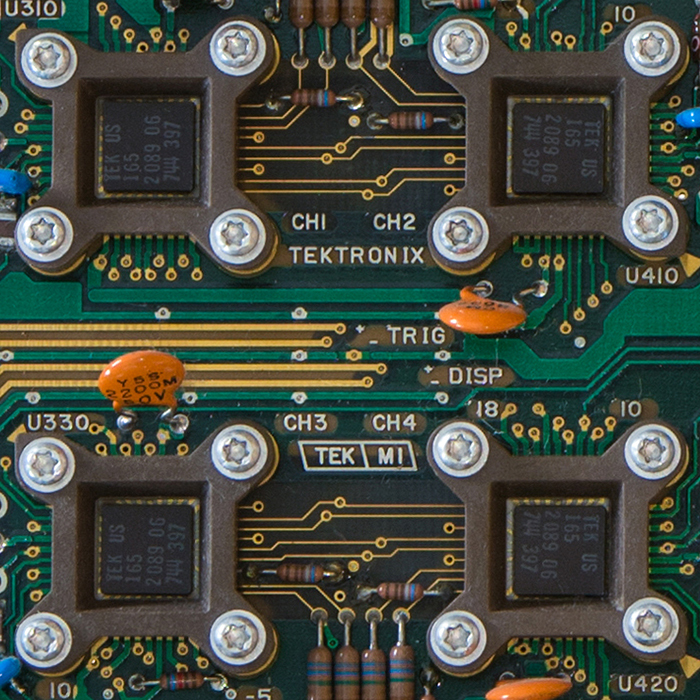The 11K series of oscilloscopes replaced the 7K series in 1986. The user interface is completely refreshed using a touch screen and menu system. As such there are few controls on the mainframe or plug-ins.
This 1986/87 issue of Handshake describes the new 11K series. Click on the image to view the PDF.
This June16, 1986 11000 Series Plug-In to Mainframe Interface Manual defines the protocol between the mainframe and the plug-ins. It is useful to those repairing or restoring an 11K series instrument, but shows the level of detail and planning that went into defining the firmware interface.
11000 Series Plug-In to Mainframe Interface Manual
This same 1986/87 issue of Handshake describes the new 11300 series of analog oscilloscopes. Click on the image to view the PDF.
The 11300 series oscilloscopes consisted of the 11301 (400MHz bandwidth with a high resolution standard CRT) and 11302 (500 MHz bandwidth with a microchannel plate CRT). The 11300 series oscilloscopes also featured an internal 500 MHz universal counter-timer that provides precise measurement of frequency, period, width, ratio, totalize and time A→B. Two unique features of the 11300 series are histogram-based measurements and video holdoff / trigger. The histogram feature is all done with triggers and the counter. No waveform digitizer is used. Previous oscilloscopes required expensive options or plug-in modules to provide synchronization of NTSC or PAL video but the 11300 series was able to achieve this feature with a handful of parts on a 1"x3" PCB that is part of the timebase board. The A revisions of the oscilloscopes increased the internal universal counter-timer to 750 MHz and added advanced triggering functions.
Like all 11K series, the 11300 series does a calibration of the mainframe and plug-ins on power up. However, the 11300 series can also do an Enhanced Accuracy calibration to the actual graticule. A beam is scanned rapidly across graticule lines, so fast that the trace looks like a bright, well-defined rectangle. It is very interesting to watch.


The museum has a 11301A 400 MHz analog programmable oscilloscope which was introduced in 1987. The mainframe accepts three plug-ins and this oscilloscope is configured with an 11A34 Four Channel Amplifier and a 11A52 600 MHz dual-channel plug-in.

This same 1986/87 issue of Handshake describes how to choose a digitizer and provides an overview of the 11K series plug-ins. Click on the image to view the PDF.
The 11A34 Four Channel Amplifier is designed around four M377 Tektronix integrated circuits which have been described as a "plug-in on a chip". The M377s are laser trimmed per end application and contain about 710 transistors in a Tektronix 6.5 GHz SH3 bipolar technology.

John Addis authored this article describing the M377 integrated circuit. Click on the image to view the PDF.
We have a series of three short videos on the 11301A and 11302A on our Video Gallery.
We have the 11K Series Introduction video on our Video Gallery.




